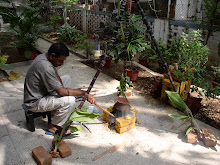Madras –India Aug 22 2009 – News from CPSC on the New CPSIA Regulation . Based on the original notice issued by CPSC.
The Consumer Product Safety Commission approved a list of products, including textiles, that are exempt from lead testing for children’s products under the Consumer Product Safety Improvements Act of 2008 (CPSIA).
The Commission declared that the following items do not exceed the lead limits in section 101(a) of the CPSIA and therefore are not required to be tested provided the products have not specifically been treated with lead-containing materials.
Included in this list are:
Textiles (excluding after treatment applications such as screen prints, transfers, decals, or other prints) consisting of:
(a) Natural fibers (dyed or un-dyed) including, but not limited to
Plant Based cotton : Kapok, Flax or Linen , Jute, Ramie, Hemp, Kenaf, Bamboo in Fiber form not as Rayon , Coir, Sisal,
Animal Origin ( including Insects): Silk, Wool (sheep), Alpaca, llama, Goat (Mohair, Cashmere), Rabbit (Angora), Camel, Horse, Yak, Vicuna, Qiviut, Guanaco.
(b) Manufactured fibers ( Synthetic) (dyes or un-dyed) including, but not limited to Rayon, Azlon, Lyocell, Acetate, Triacetate, Rubber, Polyester, Olefin, Nylon ( Polyamide, botn 6.0 and 6.6) ,Acrylic, Modacrylic, Aramid, Spandex ( Elasthane).
This means by far all most all textiles are exempt for testing for lead with the clause that it has not been subjected to any process that may introduce lead to the product
CPSC also stated that the determination that these products do not contain lead does not relieve the manufacturer from testing if products or materials are altered or modified to exceed the lead limits, or if there’s reason to expect the lead limit is exceeded.
Other components of apparel manufacturing such as buttons, slide fasteners and hooks are not exempt from testing under this final rule which is expected to be published in the Federal Register soon.

No comments:
Post a Comment